#leycesteria
Explore tagged Tumblr posts
Text




Plant of the Day
Wednesday 21 June 2023
The deciduous shrub Leycesteria formosa (Himalayan honeysuckle, flowering nutmeg, pheasant berry) grows vigorously in moist but well-drained soil in full sun or partial shade. It can be pruned back hard like an herbaceous perennial. The flowers are popular with bees and the berries attract birds, including blackbirds and pheasants.
Jill Raggett
#Leycesteria#Himalayanhoneysuckle#floweringnutmeg#pheasantberry#plants#deciduousshrub#purpleflowers#shrub#horticulture#gardens#garden#scotland
74 notes
·
View notes
Text
#1944 - Leycesteria formosa - Himalayan Honeysuckle
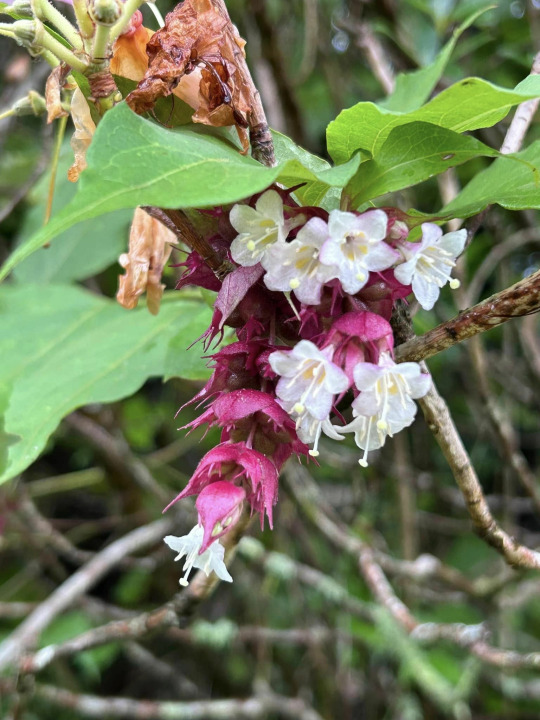
AKA, at least in English, as pheasant berry, pheasant-eye, spiderwort, whistle stick, granny's curls, partridge berry, chocolate berry, shrimp plant/flower, treacle tree/berry, flowering nutmeg, Himalaya nutmeg, Elisha's tears, Cape fuchsia, and Symphoricarpos rivularis. I’ll cover one of the local names in its home range below.
Those last few common names are particularly egregious nonsense - the plant is completely unrelated to nutmeg or to the fuchsia, and the entire family is unknown to Sub-Sharan Africa. And ‘Eilsha’s Tears is a corruption of Leycesteria. which was coined by the one-time director of Calcutta’s Royal Botanic Garden Nathaniel Wallich in honour of his friend William Leycester, a noted amateur horticulturist, in about 1820. ‘Formosa’ doesn’t help, since the plant doesn’t grow in Taiwan, and is simply the Latin for beautiful.
Native to Pakistan, India, Nepal, both East and West Himalaya, Southwestern China, Tibet and Myanmar. A noxious invasive species in New Zealand, Australia, the neighbouring islands of Micronesia, and elsewhere. The berries are unpleasantly bitter when unripe, and possibly poisonous if reports from Australia and New Zealand are confirmed, but once soft and deep purple-brown in colour are edible and sweet, having a mild flavour reminiscent of caramel or toffee.
The plant was first cultivated in the UK in 1824, although reports at the time were a little disappointed - expectations had been raised by a plate in Wallich's Plantae Asiaticae Rariores, and while they might not have had Photoshop back then they certainly had artists who were a bit heavy handed with the coloured inks. After that they discovered that it grows well in cool dappled shade, readily colonising walls and cliffs (and the trunks of treeferns in New Zealand), and providing excellent food for pheasants. It’s also surprisingly resistant to pollution.
Local people across the home range had a wide range of names and medical uses for the plant. In Standard Chinese one name is 鬼吹簫 (Guĭ chuī xiāo) meaning ‘ghost-blown flute'. That and Whistle Stick refer to the way the hollow branches sing eerily when wind blows across them, and one of the non-medical uses for the plant.
2 notes
·
View notes
Text

27 juni 2024.
"Grootmoeders oorbel"
De Leycesteria formosa struik is een vrij zeldzame verschijning in ons land. Haar Nederlandse naam grootmoeders oorbel, dankt de plant aan de bijzondere hangende bloemen. Het is de moeite waard om deze goed van dichtbij te bekijken. De bloempjes zijn wit en hebben roodpaarse schutbladeren in een aantal ‘etages’. Hierdoor lijken het inderdaad een soort oorbellen, wel van groot formaat. In de schutbladeren ontstaan bessen die verkleuren van rood tot donkerpaars. Bijzonder aan deze struik is dat het mogelijk is tegelijkertijd bloemen en vruchten te zien. Bij andere planten zijn meestal de bloemen weg als de vruchten verschijnen.
De plant is ook bekend onder de namen karamelbes en fazantenbes. De takken zijn hol en hebben wel iets weg van bamboe of riet. Ze bereiken een hoogte van anderhalf tot twee meter en gaan dan sierlijk hangen. De struik is afkomstig uit het gebied rond de Himalaya en is in zijn Latijnse naam vernoemd naar een Engelse rechter in Bangladesh.Formosa slaat niet op de oude benaming van Taiwan, maar is Latijns voor mooi gevormd. Hij staat in onze tuin.
0 notes
Text
Liste d'arbres nourricier pour l'homme, de climat tempéré
Châtaigner Castanea sativa
Mûrier blanc Morus alba
Mûrier noir Morus nigra
Figuier Ficus carica
Noisetier (Coudrier) Corylus avellana (5-7m)
Noisetier de Byzance Corylus colurna (25m)
Noyer commun Juglans regia
Tilleul à petites feuilles Tilia cordata
Pin pignon Pinus pinea
Asiminier trilobé Asimina triloba
Cormier (shnaps) Sorbus domestica
Amandier Prunus communis
Prunier Prunus domestica
Mirabellier Prunus domestica subsp. syriaca
Merisier Prunus avium
Cerisier acide (griottier) Prunus cerasus
Pêcher Prunus persica
Abricotier Prunus armeniaca
Poirier commun Pyrus communis
Poirier Pyrus pyraster (aiguillons sur les rameaux)
Poirier d'ornement Pyrus salicifolia (feuillage argenté de saule)
Cognassier Cydonia oblonga
Pommier sauvage Malus sylvestris
Amélanchier du Canada Amelanchier canadensis
Sureau
Arbustes nourriciers pour l'homme, de climat tempéré
Néflier (5-6m) Mespilus germanica
Épine noire (prunellier) Prunus spinosa
Murier sans épines Rubus fruticosus
Framboisier Rubus idaeus
Cassissier Ribes nigrum
Groseiller Ribes rubrum
Arbousier Arbutus unedo
Myrtillier Vaccinium myrtillus
Canneberge Vaccinium macrocarpon
Poivrier du sichuan Zanthoxylum piperitum
Chalef Eleagnus multiflora
Argousier Hippophae rhamnoides
Nashi Pyrus pyrifolia
Camérisier Lonicera caerulea
Aronia Aronia melanocarpa
Arbre aux faisans Leycesteria formosa
Goji (invasif) Lycium barbarum
0 notes
Text




Leycesteria formosa, the Himalayan honeysuckle,鬼吹箫。
This is not a New Zealand native although the photos were taken in South Island. It is originally from SW China and the Himalayan region, but declared as a noxious environmental weed in both countries now, as it outcompetes native species.
12 notes
·
View notes
Photo

Leycestaria formosa blooms still going strong 💚 . Native to the Himalayas and southwestern China. Prefers full sun. Hardy to USDA Zone 7. A perfect flowering border shrub. . . . #leycesteria #leycesteriaformosa #himalayanhoneysuckle #himalayahoneysuckle #floweringnutmeg #phesantberry #floweringshrub #perennial #perennials #perennialgarden #perennialflowers #fullsunplants #borderplants (at The Highlands) https://www.instagram.com/p/CT-qO80PEQf/?utm_medium=tumblr
#leycesteria#leycesteriaformosa#himalayanhoneysuckle#himalayahoneysuckle#floweringnutmeg#phesantberry#floweringshrub#perennial#perennials#perennialgarden#perennialflowers#fullsunplants#borderplants
6 notes
·
View notes
Photo



Nord, Flandres françaises: Cassel, Jardin du Mont des Récollets.
Achillée, ???, érable
??? = Leycesteria (Arbre aux faisans)
#Nord#Flandres#Cassel#jardin#botanique#fleur#mont des récollets#érable#rouge#achillée#leycesteria#arbre aux faisans
10 notes
·
View notes
Photo

Himalayan Honeysuckle plant (Leycesteria formosa) Seed source / Bezugsquelle für Samen: www.saatkontor.de
3 notes
·
View notes
Photo









Himalayan honeysuckle (Leycesteria formosa) common names include flowering nutmeg, Himalaya nutmeg, granny's curls or pheasant berry. It is a carefree blooming plant that is attractive to butterflies, bees and even hummingbirds. The blooms are followed by tiny purple berries that are edible and said to taste like toffee or caramel.
5 notes
·
View notes
Photo

Winter berries and leaves of Himalayan honeysuckle (Leycesteria formosa), also known as flowering nutmeg
Image available at Thoughts of Dawn - Himalayan Honeysuckle
22 notes
·
View notes
Photo

Leycesteria formosa; Himalayan honeysuckle. I hacked it back only to learn it loves that kind of treatment. With the knife, life! #leycesteriaformosa #himalayanhoneysuckle #prunethehelloutofit #cutitback #gardening #mezzogiardiniere (presso La Macchina Fissa) https://www.instagram.com/p/BxroRCMIbXP/?igshid=1jz24bfvdqlyg
15 notes
·
View notes
Photo



Himalayan honeysuckle (Leycesteria formosa)
54 notes
·
View notes
Text

Leaves and Flowers from Nature
Plans and elevations of flowers, iris, white lily, daffodil, narcissus, onion, dog-rose, mouse-ear, honeysuckle, Mallow, Ladies’ smock, Speedwell, Hareball, Glossocomia clematidea, Convolvulus, Primrose, Clarkia, Leycesteria Formosa.
This plate was actually a Christopher Dresser design for the book.
via pinterest
0 notes
Photo


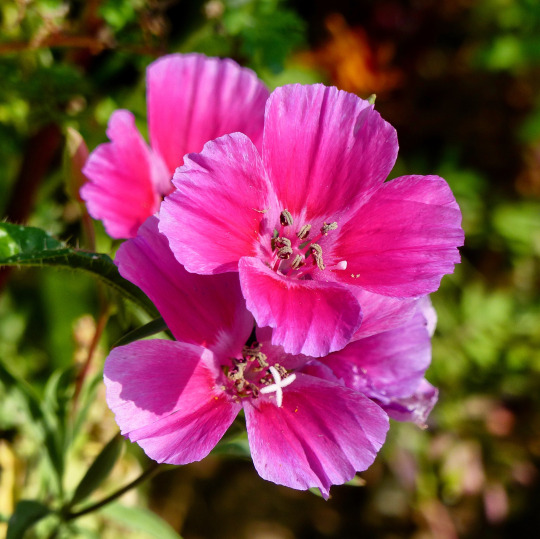
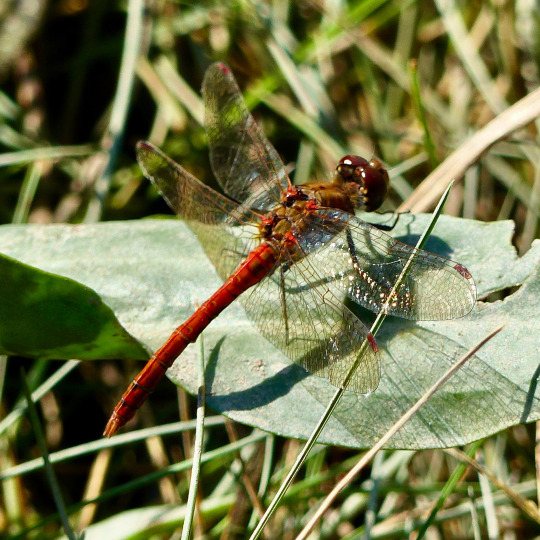
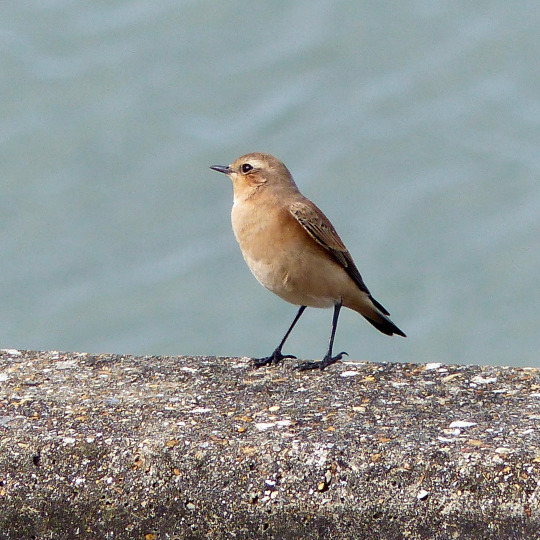




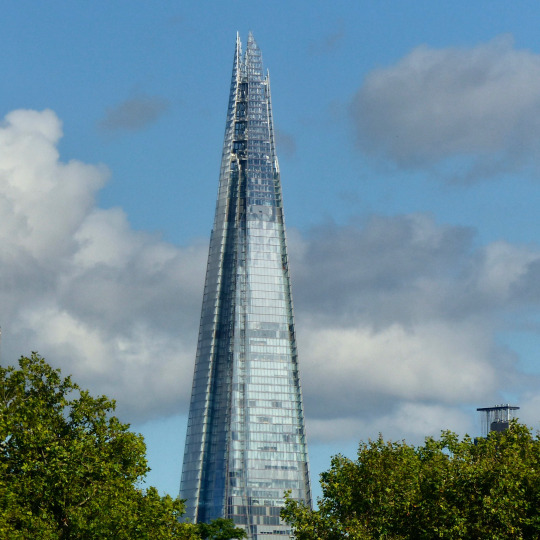
My September 2021 In Pictures. (Click on a picture for a close-up and see descriptions 1-10 below.)
1. Sunday 5th September 2021 at 09:32. Tickseed (Coreopsis tinctoria), The Promenade, Hythe, Hampshire.
2. Sunday 5th September 2021 at 19:29. Sunset, Hythe, Hampshire.
3. Monday 6th September 2021 at 10:21. Godetia (Clarkia amoena), The Promenade, Hythe, Hampshire.
4. Wednesday 8th September 2021 at 10:18. Male common darter dragonfly (Sympetrum striolatum), Shore Road, Hythe, Hampshire.
5. Saturday 11th September 2021 at 13:45. Female wheatear (Oenanthe oenanthe), Hythe, Hampshire. Thrilled to see this elegant little bird. Apparently the wheatear makes one of the longest migrations of any of the small birds. Astonishing to think that she may well have been resting on the sea wall and having a snack before flying off to Africa.
6. Thursday 16th September 2021 at 17:17. The Morgenster sail training ship, Southampton Water, Hampshire. Based in the Netherlands, she was on display at the Southampton Boat Show (10th-19th September 2021); originally built in 1919 as a herring lugger, then converted to a motor fishing vessel, and refitted as a brig in 2008. Wonderful to see her.
7. Monday 20th September 2021 at 12:17. Medlar (Mespilus germanica), Mottisfont National Trust, Romsey, Hampshire.
8. Wednesday 22nd September 2021 at 06:45. Beautiful autumn equinox morning moon, Hythe, Hampshire. Waning gibbous, 98% of full, and a day since the full Harvest moon.
9. Friday 24th September 2021 at 17:02. Himalayan honeysuckle (Leycesteria formosa), School Road Allotments, Hythe, Hampshire.
10. Monday 27th September 2021 at 14:08. The Shard, London SE1. The tallest building in the UK, a 72 storey skyscraper, designed by Italian architect Renzo Piano.
To read about My September 2021 In Pictures, click on the link:-http://susanvale.blogspot.com/2021/10/my-september-2021-in-pictures.html
To read about Tickseed (Coreopsis tinctoria), click on the link:-https://www.rhs.org.uk/plants/60968/i-coreopsis-tinctoria-i/details
To read about Hythe, Hampshire, click on the link below:-https://www.visitsoutheastengland.com/places-to-visit/hythe-p985631
To read about Godetia (Clarkia amoena), click on the link:-https://www.rhs.org.uk/plants/84578/clarkia-amoena/details
To read about the Common darter dragonfly (Sympetrum striolatum), click on the link:- https://british-dragonflies.org.uk/species/common-darter/
To read about the Wheatear (Oenanthe oenanthe), click on the link:-https://www.woodlandtrust.org.uk/trees-woods-and-wildlife/animals/birds/wheatear/
To read about The Morgenster sail training ship, click on the link:-https://zeilbrik.org/Engels
To read about the Southampton Boat Show, click on the link:-https://www.southamptonboatshow.com
To read about the Medlar (Mespilus germanica), click on the link:-https://en.wikipedia.org/wiki/Mespilus_germanica
To read about Mottisont National Trust, Romsey, Hampshire, click on the link:- https://www.nationaltrust.org.uk/mottisfont
To read about Himalayan honeysuckle (Leycesteria formosa), click on the link:- https://en.wikipedia.org/wiki/Leycesteria_formosa
To read about The Shard, London SE1, click on the link:-https://en.wikipedia.org/wiki/The_Shard
0 notes
Video
youtube
It is a vigorous deciduous shrub with erect sea-green stems bearing long-pointed, ovate leaves and pendulous racemes of white flowers with showy red-purple bracts, followed by deep purple berries. It is native to the Himalaya and southwestern China.It is considered a noxious invasive species in Australia, New Zealand, the neighbouring islands of Micronesia, and some other places. It has soft, hollow, upright green stems 1–2 m tall, which only last for 2–5 years before collapsing and being replaced by new stems from the roots. The leaves are opposite, dark green, 6–18 cm long and 4–9 cm broad, with an entire or wavy margin. Leycesteria formosa became a popular plant in Victorian shrubberies. Attempts have been made in recent years to re-popularise the species in Britain with new cultivated varieties appearing in garden centres. The fruit is often eaten by Pheasants, hence the name. Although some sources advise the fruit is not suitable for human consumption there are numerous reports of the fruit being used in cooking. A good example is of the fruit being used to make fig-style rolls: http://ift.tt/2icPW60 They can also be eaten raw: http://ift.tt/2gMpaRG As always - take care when eating any part of a plant and avoid any that are near busy roads or on pavements as it's likely they've been sprayed with weed killer. === Other common names: Himalayan honeysuckle flowering nutmeg granny's curls pheasant berry === Scientific classification e Kingdom: Plantae Clade: Angiosperms Clade: Eudicots Clade: Asterids Order: Dipsacales Family: Caprifoliaceae Genus: Leycesteria Species: L. formosa Binomial name Leycesteria formosa
5 notes
·
View notes
Photo

Maximum filterage. Leycesteria, ilex crenata, plum and grasses #suffolkgarden #plantporn #plantingdesign (at Tunstall, Suffolk) https://www.instagram.com/p/B1eoU11A9up/?igshid=1gxnxn7jk7a8r
0 notes